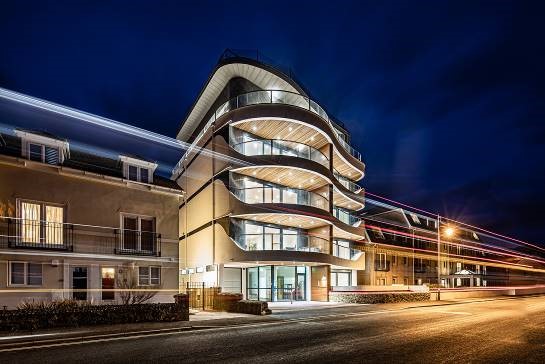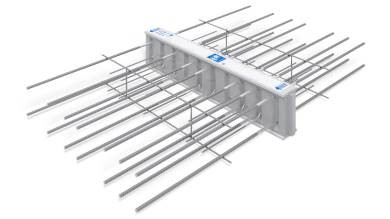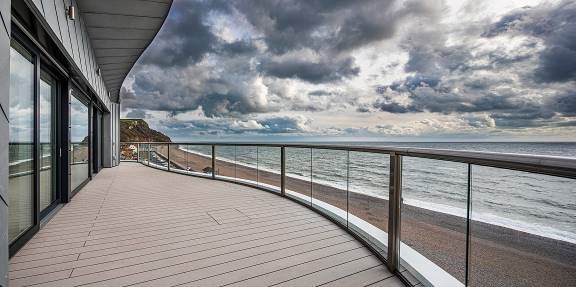Seaton is a traditional Devon seaside resort town, but the eye-catching new development on the seafront is anything but traditional.
Seaton Beach Apartments offers innovative, award-winning luxury beachfront apartments, complete with a penthouse – and is the first multi-residential development in the UK to be certified as passive house plus.
The ground floor is concrete, with monolithic clay block construction used from the first to third floors and timber frame for the penthouse.
Combined with high-performance external render and internal plaster, the result is an entirely mineral hygroscopic wall build-up, which helps regulate humidity and provide a comfortable internal environment.
Other features include low electromagnetic field wiring and a highly efficient mechanical ventilation system with heat recovery and exhaust air heat pump for hot water supply. There is constant filtered air within the triple glazed, airtight construction and PV roof panels generate more energy than the building uses – which is 90% less energy usage than a typical new build.
Because passive house standard is easier to achieve with simpler, box-like forms, buildings can be considered aesthetically limited. However, design ingenuity and the use of Schöck Isokorb thermally broken balcony connectors defies that notion.
The potentially unexciting building now features large sea-facing balconies with generous curves. The detailing of these balconies is critical though, if thermal bridging is to be minimised and the energy performance not compromised.
Schöck Isokorb thermal breaks are installed where the balconies meet the clay block structure. Ineffectual insulation at these cantilever connectivity points will result in local heat loss, requiring more energy to maintain the building’s internal temperature.
Low internal surface temperatures around the thermal bridge can also cause condensation, leading to structural integrity problems with absorbent insulation products and the potentially serious occurrence of mould growth.
The Schöck Isokorb is one of the most technically advanced countermeasures against thermal bridging. It thermally separates components from one another and also acts in a structural design capacity. The product type used has an innovative HTE Compact compression module and transfers both negative moments and positive shear forces with cantilever balconies.
As the leading international supplier of structural thermal breaks, Schöck is able to offer planners complete construction dependability and almost limitless freedom of design with the options available.
There are solutions for concrete-to-concrete, concrete-to-steel, steel-to-steel, a thermally insulating connection for reinforced concrete walls – and even a maintenance free alternative to wrapped parapets.
The temperature factor used to indicate condensation risk (fRSI) which must be greater than, or equal to, 0.75 for residential buildings, is easily met by incorporating the Isokorb.
All products meet full compliance with the relevant UK building regulations and the NHBC. They also offer LABC Registration and have independent BBA Certification.
View Thermal structural connectors Product Entry




 resized-comp212922.jpg)